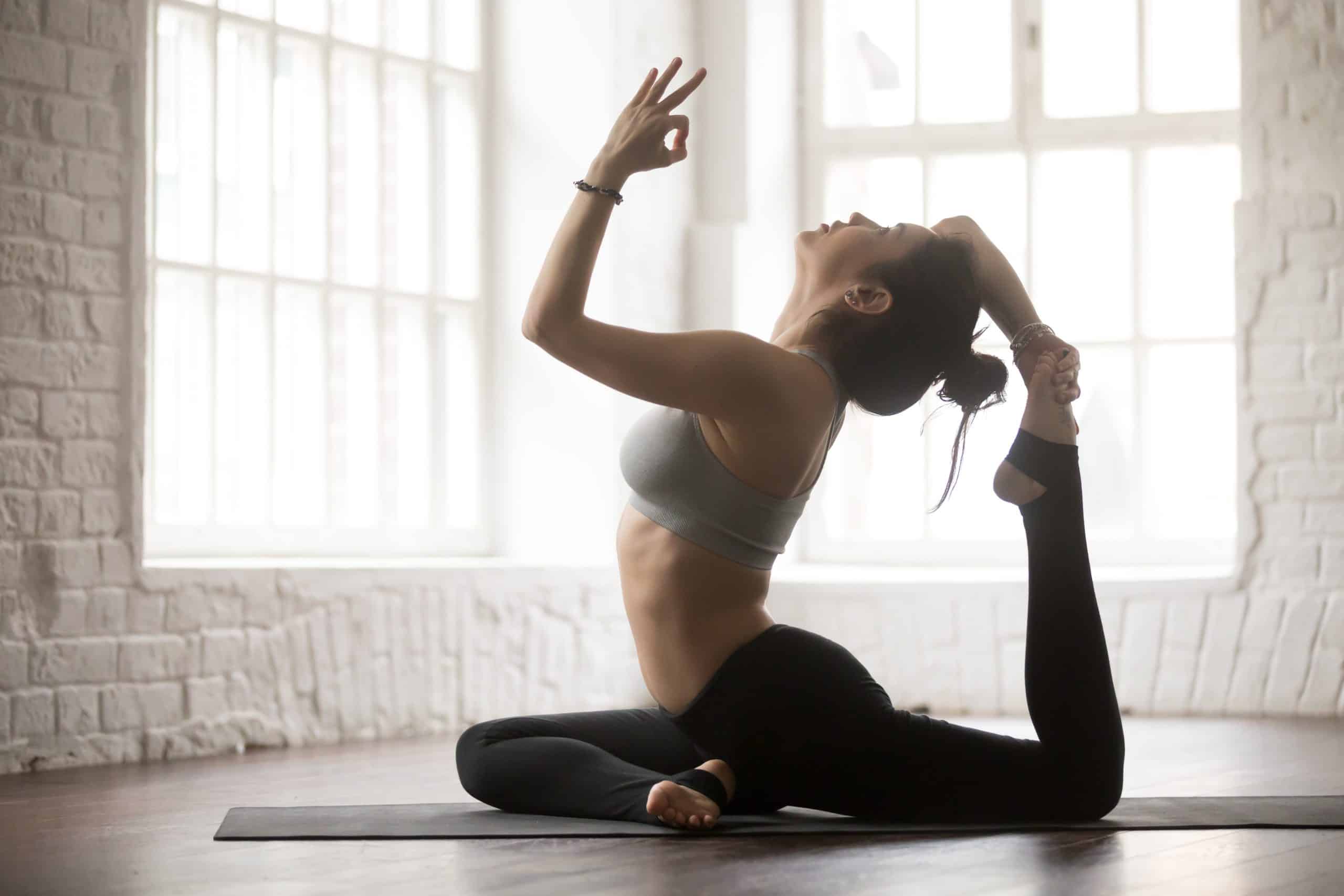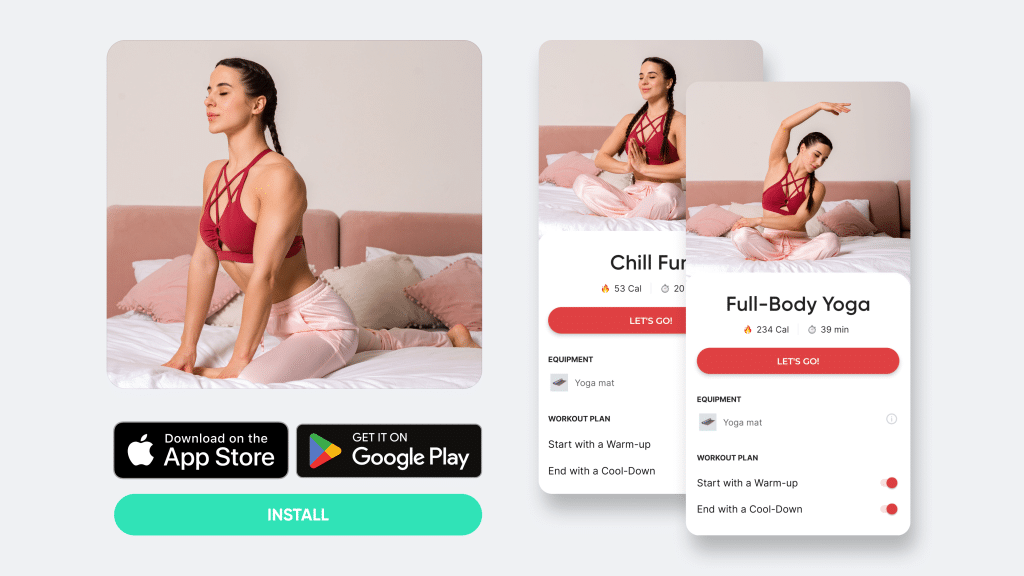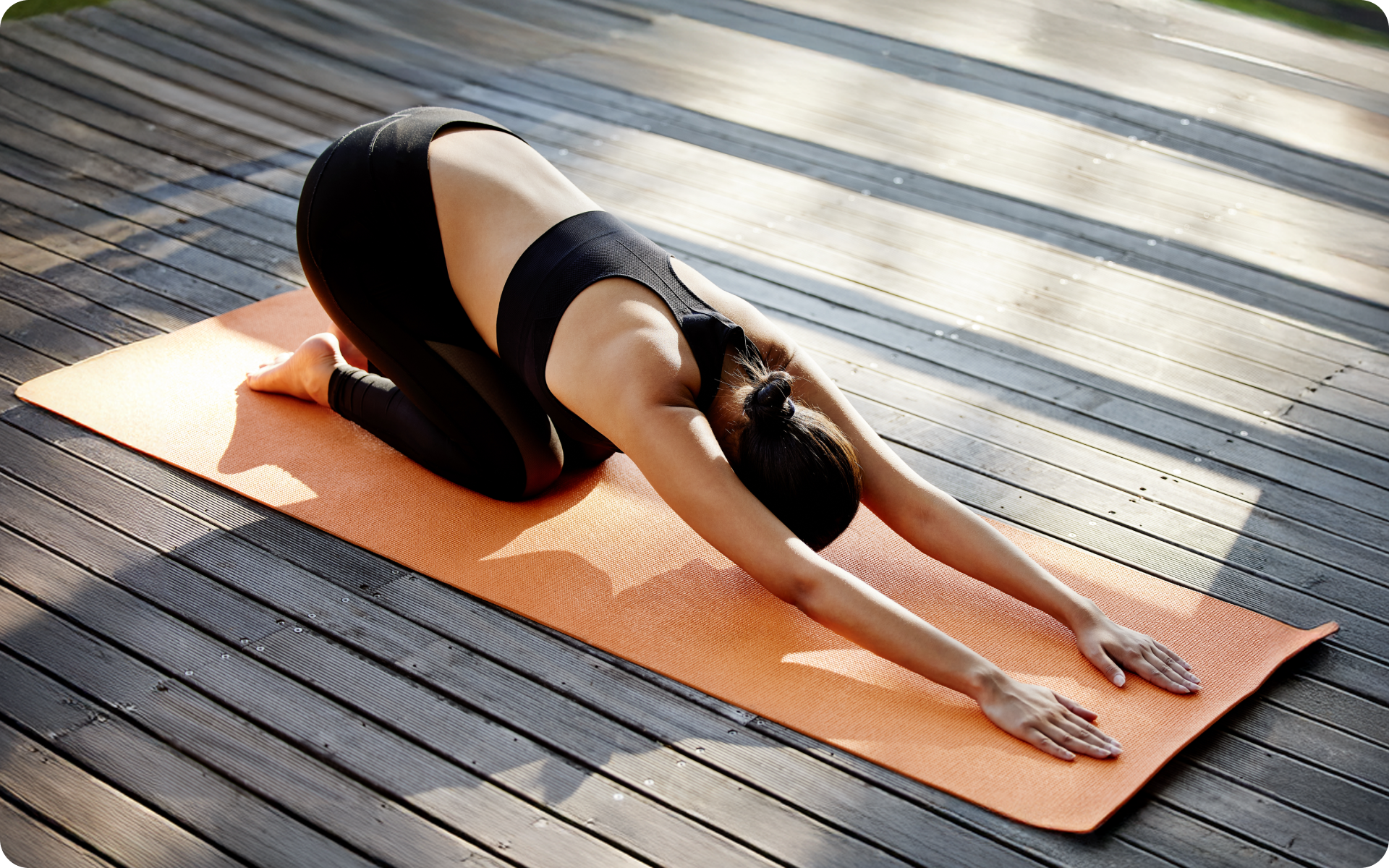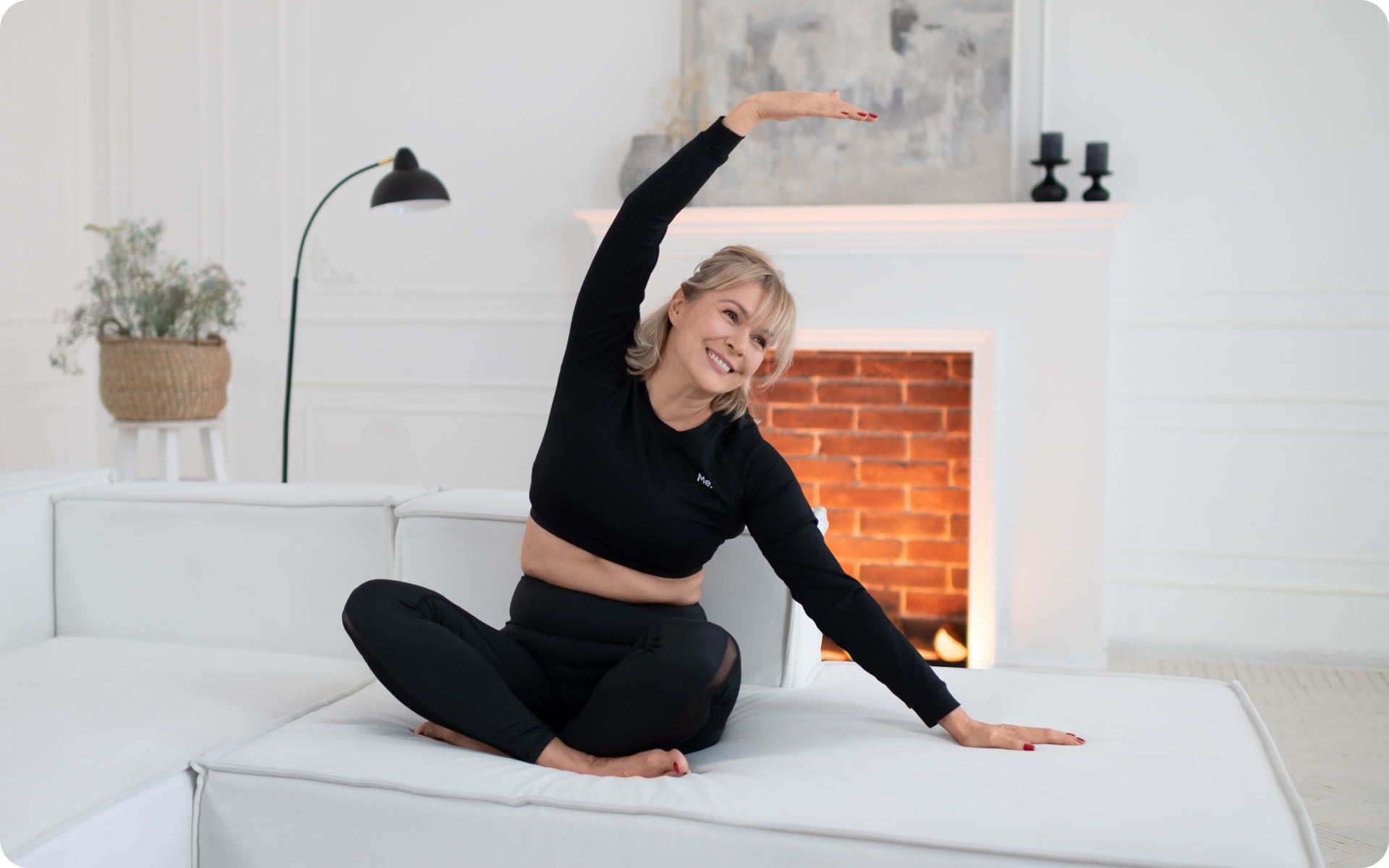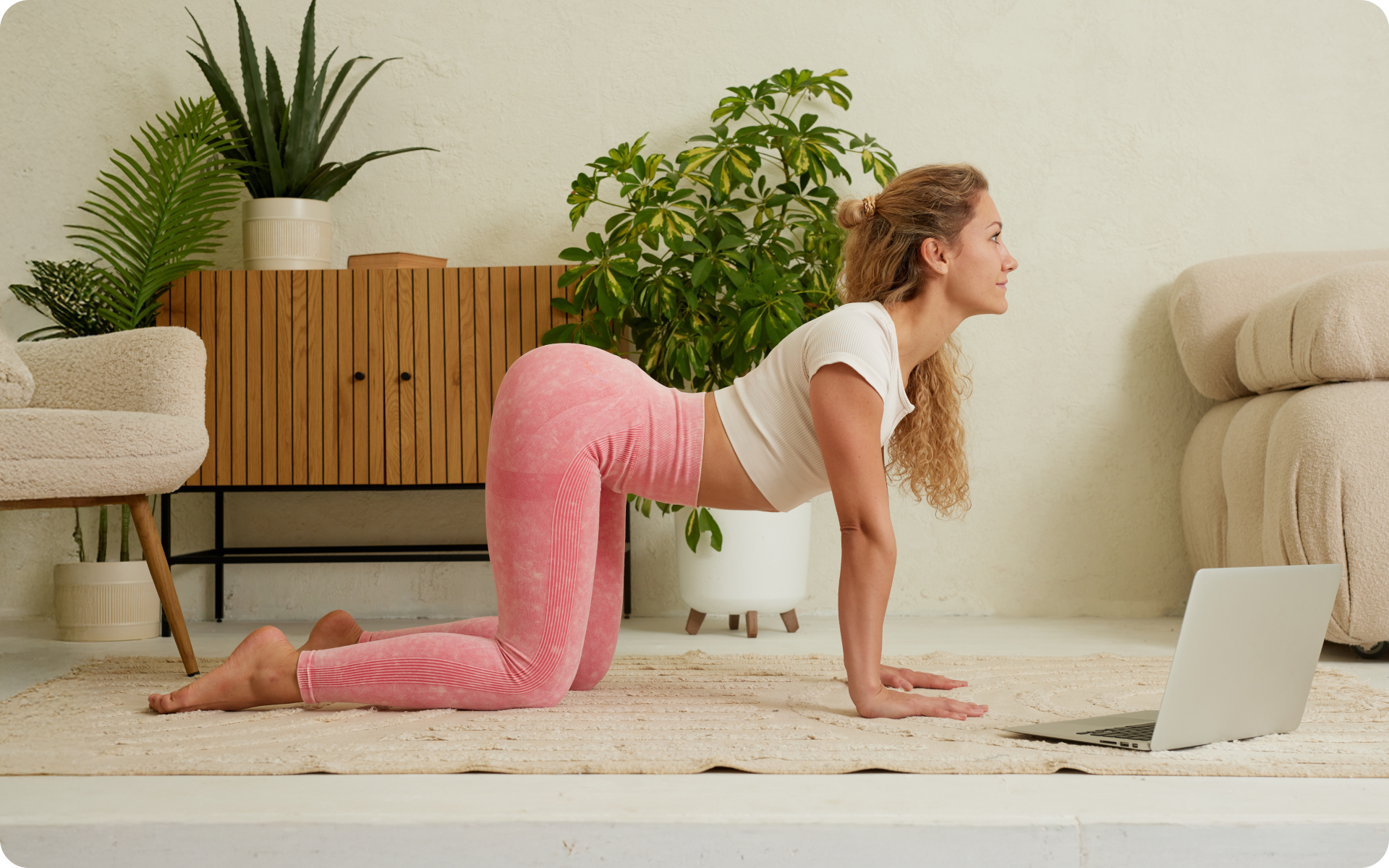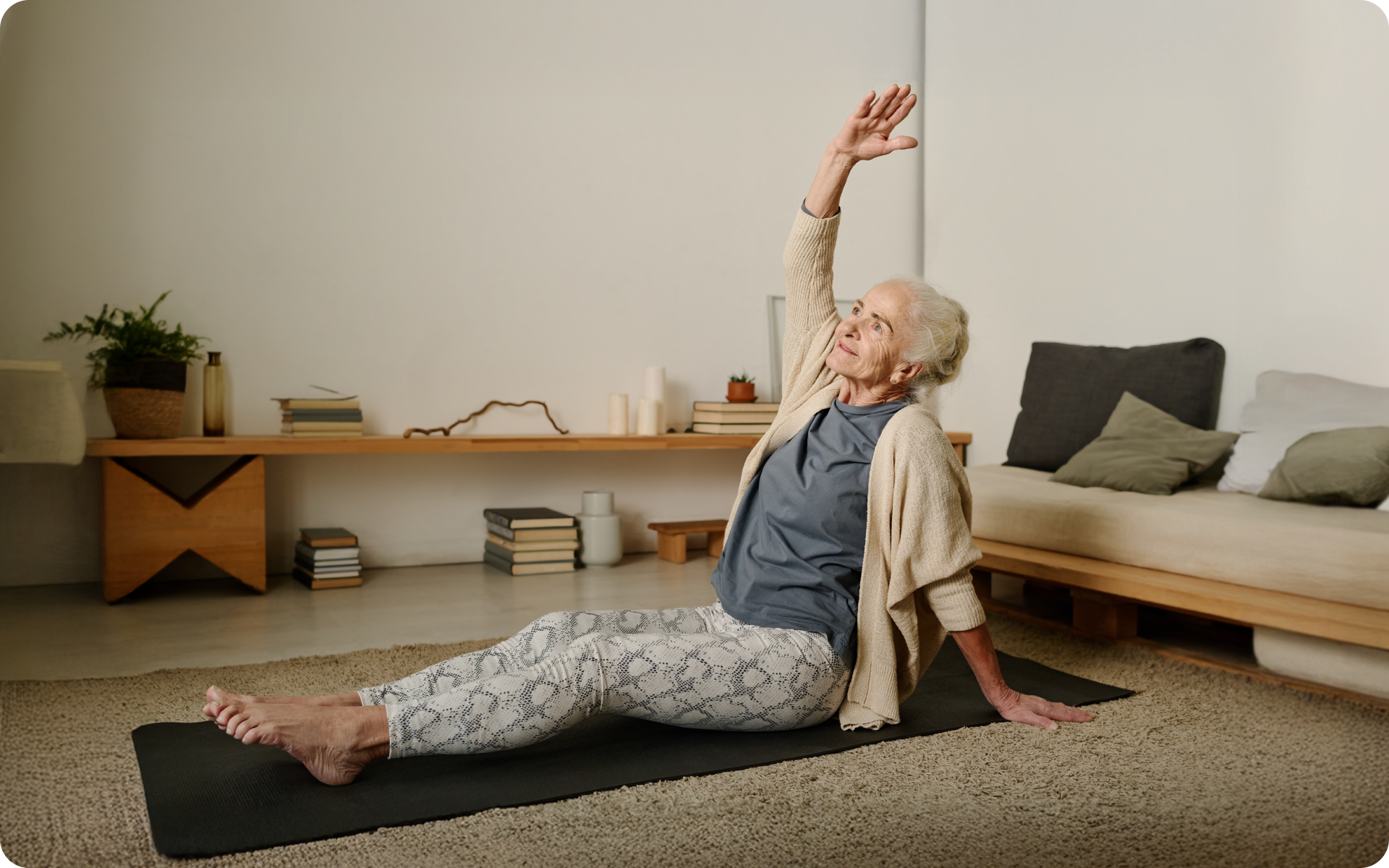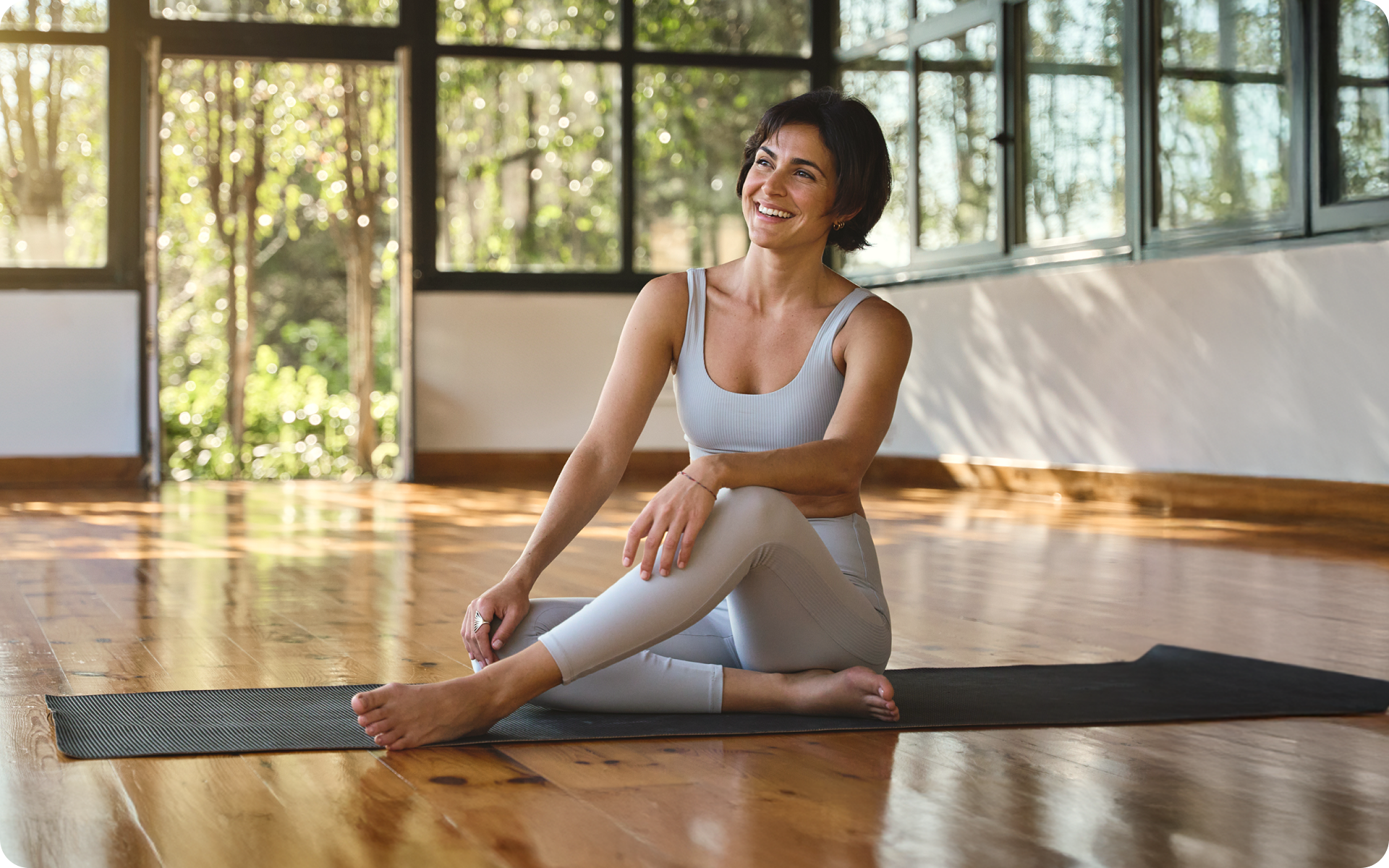Yoga sequencing is one of the most fundamental parts of this practice that many people tend to ignore or have absolutely no idea exists. In hatha yoga, sequencing is incredibly important and doing it will reap incredible benefits, not only to your physical state, but also your mental and spiritual well-being.
If you’re interested in learning more about this simple yet transformational practice, read on to find out more about hatha yoga sequencing, its importance, how to design a hatha yoga sequence for yourself, and much more.
What Is Hatha Yoga?
Before we get into how to create a hatha yoga sequence, what exactly do people mean when they talk about hatha yoga?
To many, hatha yoga simply refers to the yoga asanas or poses many of us are familiar with. It is made up of simple and advanced challenging poses that you can see all over Instagram and other social media platforms. These poses are seen as a tool to help balance the mind, body, and spirit to prepare for a meditation or a calming, peaceful state of being.
While this isn’t necessarily incorrect, it does not truly encompass what hatha yoga actually is. As this practice originated in India, many of its traditional fundamentals and practices have been lost in translation as well as in the westernization of this practice (3).
According to Ekhart Yoga, the true definition of this practice is found in its name. Hatha means Sun and Moon in Sanskrit – Ha (Sun) and Tha (Moon). The classical meaning of hatha yoga is different from the modern interpretation. Today, hatha yoga is seen as a physically challenging practice with the emphasis on precision, alignment, stability, strength, and flexibility(4).
Modern Hatha Yoga Primarily Encompasses a Physical Practice
- Pranayama aka yogic breathing techniques that emphasize moving prana, also known as Life Force, through the body to enhance energy.
- Asanas aka yoga postures – From something as simple as Mountain Pose (Tadasana) or Corpse Pose (Savasana) to something as complex and challenging as Handstand Scorpion (Taraksvasana) or the Formidable Face Pose (Gandha Bherundasana).
- Mantras – Vibrational or sacred sounds to set an intention on. Chanting a word, series of words, or sound repetitively either aloud or silently to invoke spiritual qualities of connecting with a higher power. Mantra in Sanskrit means “free from mind”, “mind tool”, or “thought that liberates or frees”.
- Murdas – These are hand gestures that are believed to help link the brain to the body. They can help soothe pain, increase alertness, and change mood and perspective.
- Shatkarma aka Shatkriya – A set of cleansing techniques that are believed to clear the body of impurities.
A review that was published in 2021 in the Journal of Ayurveda and Integrative Medicine found evidence that these techniques have benefits that include enhancing respiratory functions, improving digestive disorders, managing rhinosinusitis, enhancing cognition, promoting relaxation, activating the sympathetic nervous system, and improving overall metabolism (2).
- Visualization – A type of meditation technique where the attention of the practitioner is focused on a positive image, thought, feeling, or sensation.
Hatha yoga can simply be described as a physical yoga practice. In modern times, the emphasis is on a series of poses and breathing techniques that help prepare the body for meditation by clearing the mind from distractions and turning your focus inward.
Read More: Beginner Friendly Seated Yoga Poses To Try Today
Is Hatha Yoga For Beginners?
Yes, it is incredibly accessible for beginners and a great place to start as beginners learn the how-tos of yoga poses. This practice can be modified for any level, from beginner to advanced yogis who have been practicing consistently for years with the ability to execute the most challenging poses.
Most beginner hatha yoga classes are gentle and slower paced. There’s a focus on holding postures for several breaths, which makes hatha classes still physically and mentally challenging. In addition to the physical practice, you can expect your class to include meditation and a pranayama practice.
How Many Hatha Yoga Poses Are There?
According to a well-known classic 15th century Sanskrit manual on Haṭha yoga – The Hatha Yoga Pradipika by Svātmārāma – there are 84 poses or yoga asanas. Of these 84, only 15 are actually described in the text – seven are performed while seated and eight are not seated.
However, it should be noted that later texts that were written after the Hatha Yoga Pradipika describe more poses:
- Yoga Chintamani – an early 17th century text. Some sources say it lists 110 poses, while others say it lists 118 poses.
- Joga Pradipika was written in the 18th century and is said to list 84 asanas, in addition to 6 cleansing methods, 24 mudras, and 8 kumbhakas (breathing practices).
- Hathabhyasapaddahti was also written in the 18th century and claims that there are 112 asanas.
- Other books written from the 20th century onwards claim that there are anywhere between 180 and 200 hatha yoga asanas.
Regardless of how many asanas exist in contemporary yoga, the majority of poses originate from the 15 asanas described in The Hatha Yoga Pradipika by Svātmārāma back in the 15th century.
What Is a Hatha Yoga Asana Sequence?
Hatha yoga sequencing is the art of putting different yoga poses together in a continuous and connected pattern toward an intended result. Most yoga classes you’ve attended were most likely sequenced intentionally. The goal of a yoga sequence can be relaxation, improved focus, mind-body connection, increasing energy levels, or specific areas of the body you want to focus on.
If you wish to cinch your waist, tone up your bat wings, blast away the muffin top – our fitness app was created to cater to all your needs! BetterMe won’t give excess weight a chance!
How Many Yoga Poses Are There in a Hatha Sequence?
This is largely dependent on the teacher or individual and the amount of time that is dedicated to the hatha class. Some people say that 20 to 30 poses in a sequence is okay, whereas others advocate just 10 asanas.
We recommend picking a number that goes with your level of experience, in addition to the amount of time you want to dedicate to the practice/class. As a beginner, we advise sticking to the original 15 asanas as they are not as physically challenging and you’ll have less chance of injury.
How to Create a Hatha Yoga Sequence
To create a sequence that works for you, you should consider the following:
What are your goals?
Yoga is a practice that has numerous mental and physical benefits, including increased flexibility, increased muscle strength and tone, improved respiration, energy and vitality, maintaining a balanced metabolism, weight reduction, cardio and circulatory health, improved athletic performance, and protection from injury by improving balance, reducing depression and anxiety, and many more benefits (5, 1).
The perfect sequence incorporates asanas, yogic breathing, and meditation techniques that help achieve the goal of your practice.
Flow
The goal of a sequence is for poses to flow easily from one to another without disrupting the mental state of the practitioner. A typical yoga sequence has a warm-up, 1-3 rounds of sun salutations, 1-3 rounds of standing poses, a peak pose, and a cool-down. Meditation and Pranayama can be practiced at the beginning or end of your sequence.
For example, you could choose to start with a warm-up, move into your standing poses, then flow into seated ones, and ultimately to asanas that require you to lie down on the floor/mat as you prepare for your final resting pose in Savasana (or Corpse Pose).
Safety
This is quite closely tied to your experience with yoga and how things feel in your body. Everyone has a different body type and no one can perform every yoga pose, which is why it is important to listen to your body and what feels good or right for you. You should always focus on how you feel in a pose rather than how you look in order to optimize your personal safety when practicing yoga. As a beginner, there are clearly poses you can’t do and should not attempt without professional instruction and support as they could result in injury.
Seasoned practitioners who have been practicing yoga for longer will have developed more strength, balance, and flexibility, allowing them to move their bodies and limbs into these challenging positions. We recommend incorporating yoga props such as blocks, straps, bolsters, and blankets as they will help you modify postures for your body and level.
Challenge
While yoga is generally considered to be a gentle exercise or practice, it is still meant to be challenging both physically and mentally. To gain the most from it, choose asanas that are within your level – beginner, intermediate or advanced – that challenge you and make you feel good. A little sweat never hurt anyone.
Read More: Unwind With These Relaxing Yoga Poses While Lying On Your Back
Simple Beginner Hatha Yoga Sequence
If you are uncertain about how to create your own sequence, here are two simple examples of hatha sequences that you could use at home or in a yoga class:
Option 1 – With this sequence, all the asanas are standing postures:
- Mountain Pose (Tadasana)
- Standing Forward Fold (Uttanasana)
- Low Lunge (Anjaneyasana) right side
- Low Lunge (Anjaneyasana) left side
- Downward Dog (Adho Mukha Svanasana)
- Standing Forward Fold
- Mountain Pose
- Warrior II (Virabhadrasana II) right side
- Reverse Warrior (Viparita Virabhadrasana) right side
- Warrior II (Virabhadrasana II) left side
- Reverse Warrior (Viparita Virabhadrasana) left side
- Tree Pose (Vrikshasana) both sides
- Mountain Pose
Hold each position for two to three breaths and make sure your core is engaged throughout.
Option 2 – This sequence starts with standing poses, before flowing into seated, kneeling, and lying down poses:
- Mountain Pose (Tadasana)
- Tree Pose (Vrikshasana)
- Butterfly Pose (Baddha Konasana)
- Half Lotus Pose (Ardha Padmasana)
- ThunderBolt Pose (Vajrasana)
- Cat-Cow Pose (Marjariasana and Bitilasana)
- Snake Pose (Sarpasana)
- Cobra Pose (Bhujangasana)
- Leg Raise (Uttanpadasana)
- Rabbit Pose (Shashankasana)
- Child Pose (Balasana)
- Corpse Pose (Savasana)
FAQs
What is the difference between modern and traditional yoga sequencing?
The main difference between modern and traditional yoga sequencing is the fact that modern hatha yoga sequencing pays more attention to the physical, i.e. poses and posture, while traditional sequencing focuses more on the spiritual aspect of the practice and balancing the Sun and Moon energies in the body.
What is a good morning Hatha yoga sequence?
Morning yoga is an excellent way to get your blood pumping and get yourself even more awake. A simple morning hatha yoga sequence you can do as soon as you step out of your bed is:
- Easy Pose (a cross-legged sitting position)
- Child’s Pose
- Downward Facing Dog
- Forward Fold
- Mountain Pose (Tadasana)
- Forward Fold (x 2)
- Mountain Pose (x 2)
- Standing Side Bend right side
- Standing Side Bend left side
- Mountain Pose (Tadasana)
- Tree Pose
- Mountain Pose

BetterMe is your fast-track ticket to a long-lasting weight loss! Tailor your fitness journey and maximize your results with just a couple of swipes!
The Bottom Line
While there isn’t a specific way of practicing yoga, hatha yoga sequencing is a great way of creating balance and peace of mind by flowing through asanas. Doing this will allow you to better connect with your mind, breathing, and inner self.
DISCLAIMER:
This article is intended for general informational purposes only and does not serve to address individual circumstances. It is not a substitute for professional advice or help and should not be relied on for making any kind of decision-making. Any action taken as a direct or indirect result of the information in this article is entirely at your own risk and is your sole responsibility.
BetterMe, its content staff, and its medical advisors accept no responsibility for inaccuracies, errors, misstatements, inconsistencies, or omissions and specifically disclaim any liability, loss or risk, personal, professional or otherwise, which may be incurred as a consequence, directly or indirectly, of the use and/or application of any content.
You should always seek the advice of your physician or other qualified health provider with any questions you may have regarding a medical condition or your specific situation. Never disregard professional medical advice or delay seeking it because of BetterMe content. If you suspect or think you may have a medical emergency, call your doctor.
SOURCES:
- Exploring the therapeutic effects of yoga and its ability to increase quality of life (2011, ncbi.nlm.nih.gov)
- Health and therapeutic benefits of Shatkarma: A narrative review of scientific studies (2021, ncbi.nlm.nih.gov)
- The Westernization of Yoga (2021, thewholeu.uw.edu)
- What is Hatha Yoga? (n.d., ekhartyoga.com)
- Yoga: What You Need To Know (2021, nccih.nih.gov)
